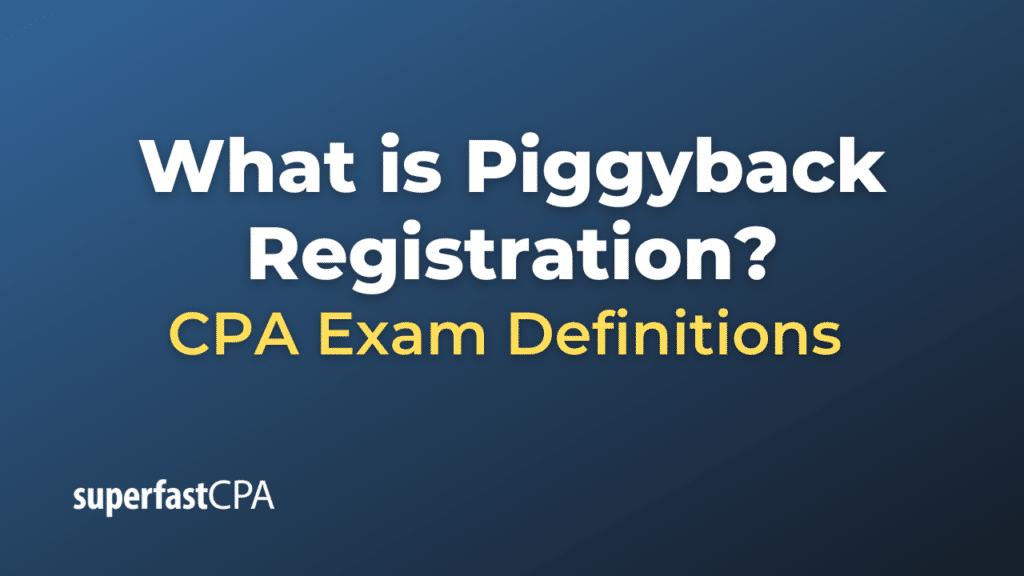Piggyback Registration
Piggyback registration is a form of secondary market registration of securities in which the securities issued by a company are included in the registration of a new public offering by the company. This approach allows existing shareholders, usually institutional investors or company insiders, to sell their shares to the public as part of the company’s new stock offering.
The term “piggyback” comes from the idea that the existing shareholders are “riding on the back of” the company’s registration statement filed with the Securities and Exchange Commission (SEC) or other relevant regulatory body. This process can make it easier and less expensive for those shareholders to sell their shares, as the company is effectively handling the regulatory requirements for them.
The right to piggyback registration is often negotiated by investors (like venture capitalists) when they initially invest in a company. These rights are typically outlined in an investment agreement or shareholders’ agreement.
It’s important to note that piggyback registration rights can sometimes be limited. For example, the company or its underwriters may have the right to reduce the number of shares that can be sold by these shareholders (a process known as “cutting back”) to prevent the offering from being too large.
Example of Piggyback Registration
Startup Inc., a technology startup, received early-stage investment from Venture Capital Firm A. As part of the investment agreement, Firm A negotiated piggyback registration rights.
Now, Startup Inc. has grown significantly and plans to go public with an initial public offering (IPO). The company is registering its shares with the Securities and Exchange Commission (SEC) as part of this process.
Because of the piggyback registration rights in their agreement, Firm A can now include its shares of Startup Inc. in the company’s registration for the IPO. This allows Firm A to sell its shares to the public along with the new shares being sold by Startup Inc. This can provide Firm A with an easier and potentially less expensive path to sell its shares, as Startup Inc. is handling the bulk of the registration process.
However, the underwriters handling Startup Inc.’s IPO have concerns about oversupply and decide to limit the number of additional shares that can be sold. As a result, they use their “cut back” provision to reduce the number of shares Firm A can include in the piggyback registration. Firm A will still be able to sell some of its shares, but not as many as it originally intended.
In this example, the piggyback registration rights provided Firm A with additional liquidity options, even though the number of shares they could sell was ultimately limited by the underwriters.














